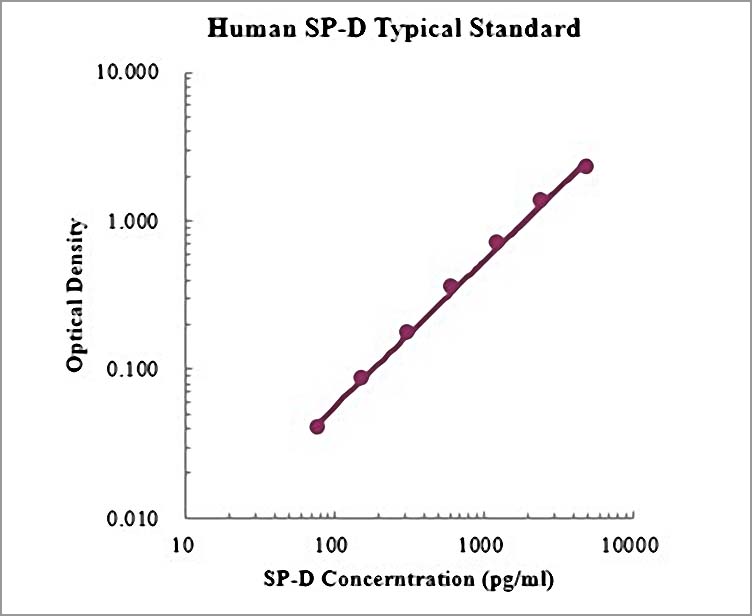Specifications
SHIPPING NOTES
Storing antibodies at various temperatures (up to 40°C) for one week does not affect their activity. As a precautionary measure, we ship all products in insulated packaging with cold packs to provide extra temperature stability in transit. The cold packs may be thawed when you receive the shipment, please be assured that this is normal and your product(s) are safe to use. Once you have received your product(s), please follow the storage instructions on the datasheet(s).
COUNTRY OF ORIGIN
United States of America
APPLICATION
Sandwich ELISA
*USAGE / SAFETY STATEMENT
This product is for research use only. It is not intended for diagnostic or therapeutic use.
CROSS REACTIVITY
This assay has shown no significant cross-reactivity.
DETECTION METHOD
Colorimetric
SPECIFICITY
This kit can assay both natural and recombinant human SP-D.
PRODUCT RANGE
78.13 - 5000 pg/ml
BACKGROUND
Surfactant Protein D (SP-D) is a 43 kDa member of the collectin family of innate immune modulators. It is constitutively secreted by alveolar lining cells and epithelium associated with tubular structures and induced in cardiac smooth muscle and endothelial cells. Human SP-D is found in serum, plasma, broncho-alveolar lavage fluid, and amniotic fluid.
SP-D plays an important role in host defense and innate immunity. It binds human neutrophil defensins, modulating influenza anti-viral defense. It has increasing evident that SP-D involves in the pathogenesis of many pulmonary diseases, and serves as a biomarker.
SAMPLE TYPE
Cell culture supernatant, serum and plasma.
PRINCIPLE ASSAY
Human SP-D ELISA Kit is based on the quantitative sandwich enzyme-linked immunosorbent assay technique to measure concentration of human SP-D in the samples. A monoclonal antibody specific for human SP-D has been immobilized onto microwells. Standard or samples are pipetted into the wells, followed by the addition of biotin-linked monoclonal antibody specific for SP-D, and SP-D present is bound by the immobilized antibody and detect antibody following the first incubation. After removal of any unbound substances, streptavidin-HRP is added for a second incubation. After washing, substrate solution reacts with HRP and color develops in proportion to the amount of SP-D bound by the immobilized antibody. The color development is stopped by addition of acid and the optical density value is measured by microplate reader.
ASSAY TYPE
Sandwich (quantitative)
RECOVERY
105% (Average Recovery from Serum Samples).


